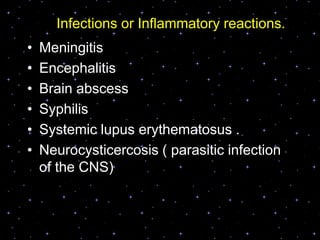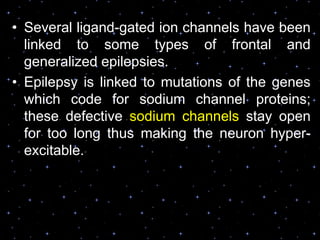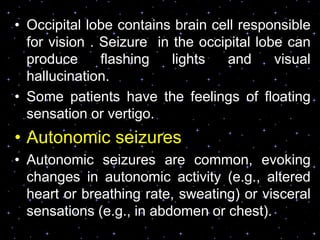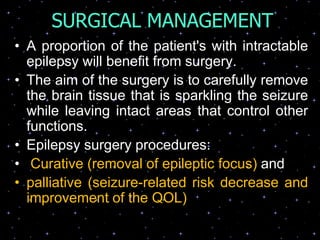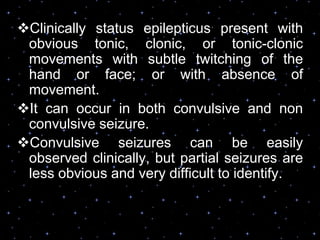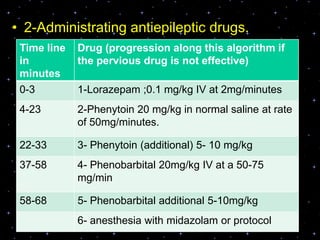This document provides information about epilepsy and seizures. It begins with a brief history of epilepsy, noting that ancient cultures believed it was caused by supernatural forces. It was not until the 19th century that epilepsy began to be viewed as a medical condition. The document then discusses the physiology and causes of seizures, classifying them as partial or generalized seizures. Partial seizures can be simple, involving isolated symptoms, or complex, involving impaired awareness. The pathophysiology involves abnormal electrical firing in groups of neurons in the brain. In summary, the document covers the history, types, causes and neurological mechanisms of epilepsy and seizures.












![What is Epilepsy?
[Epilepsia- (Greek)- seizure]
Epilepsy is a chronic disorder of abnormal,
recurrent, excessive, and self terminating
electrical discharge from neurons.
Spontaneously recurrent seizure more than
one time is called as epilepsy.
The periods between seizures can vary
widely and can be measured in minutes,
hours, days, weeks, months, or even
years.](https://image.slidesharecdn.com/epilepsy3-130527223328-phpapp02/85/Epilepsy-3-13-320.jpg)








